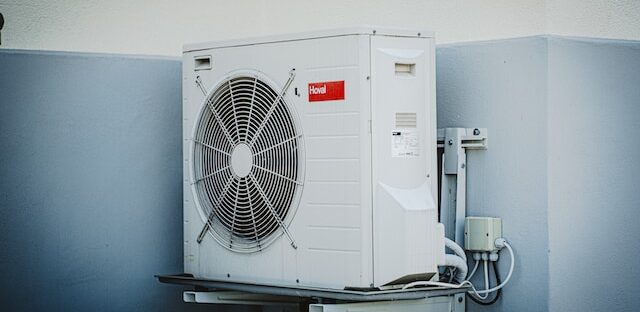If you’re a homeowner with poor insulation, few west-facing windows, and a home that feels too warm, you may need a new AC system to keep your family comfortable. But AC installation is a complicated task.
Here’s a checklist for preparing for an AC installation to ensure it goes as smoothly as possible. Visit Website to learn more.

If you’re replacing your air conditioning system, it’s important to choose a contractor with proper credentials and years of experience. This can help ensure the quality of your installation, ensuring that your new AC unit performs well for years to come. To evaluate contractors, you should ask for quotes from several companies and assess their reputation within the industry. You should also consider factors such as customer satisfaction, certifications, and the quality of their work.
It’s also important to look for a contractor that is licensed, insured and certified to work in your area. These qualifications will ensure that the contractor is held to high standards and adheres to industry best practices. Additionally, it’s a good idea to check if the contractor is a member of a Better Business Bureau or trade organization. These memberships can indicate that the company has a strong commitment to the community and its clients.
The level of experience a contractor has can also help you determine their reliability and competence. You should also look for contractors with specific expertise in particular AC systems and brands that are relevant to your needs. This can help you avoid expensive changes to the project as it progresses.
Additionally, you should choose a contractor with transparent pricing and a willingness to explain all costs in detail. This will eliminate the possibility of hidden fees that can balloon the cost of the project. It’s also a good idea to get quotes from multiple contractors so that you can compare pricing structures and make an informed decision based on your budget.
Once you’ve narrowed down your options, you should ask for referrals from friends and family who have recently had their HVAC systems replaced. You can also ask for recommendations on online review sites such as Yelp and Google. Be sure to read reviews carefully and consider the overall experience of previous customers, as this is a great indicator of the type of service you can expect. You should also look for common themes amongst the testimonials, such as excellent communication and punctuality.
When you’re ready to have a new AC unit installed, there are several preparations you need to make before the technicians arrive. These can minimize problems during the installation and ensure that your new AC system is working properly.
Make sure that the window frame and sash are in good condition, with no wood rot or damage. The sash should be able to support the weight of the AC unit. If not, you will need to add a bracket to hold it in place or fasten it from the inside with angles.
Clear the space where the new AC unit will be placed so technicians can work easily and without tripping over obstacles. This will also reduce the risk of damage to your furniture, toys, or other objects that may get in the way while the contractor is working.
Technicians will need easy access to the area where the air conditioning unit is going to be installed, as well as to the furnace area where the evaporator coil (A-coil) and interconnecting tubing are located. They will also need access to the low voltage wiring that controls the AC and the home’s main electricity panel.
If you’re installing a central AC system, choose a sheltered area out of direct sunlight. This is important, as sunlight can cause the system to overheat. Also, keep the unit away from drains and gutters that may become flooded during a heavy rainstorm.
If you’re having a ductless mini-split system or geothermal system installed, have your ductwork cleaned and inspected. These systems use a series of ducts to distribute cool air throughout a structure, so they can’t operate effectively when the ducts are filled with dirt. Have the ducts cleaned before your installation, and have them sealed to prevent further contamination. Also, be sure that the air ducts are big enough to accommodate the size of the new system.
Window AC units are a great option for people who do not have central air. However, the installation process can be intimidating for some homeowners. A reputable contractor can make the job much easier and ensure that the unit is installed correctly. They can also provide tips and advice on how to properly care for your new unit. In some cases, the contractor may even be able to perform the installation for a more affordable rate.
Before beginning the installation process, it is important to thoroughly read the manufacturer’s instructions. The instructions will be specific to your type of air conditioner, so it’s essential to follow them closely. This will help ensure a tight fit and an airtight seal in the window frame.
Begin by opening the window as wide as possible. Remove any storm windows and window screens and remove anything from the window sill that could interfere with the placement of the AC unit. If you need to, place a stool or bench in front of the open window to provide support for the AC when it is being moved into position.
Next, install the angle brackets provided with your unit. These brackets are used to prevent the AC from forcing the window open with its weight. Screw one side of the bracket to the bottom sash and the other to the top sash. Once the angle brackets are in place, you can slide the window AC unit into place and fasten it to the mounting bracket using the screws provided.
Once the window AC is in place, you can close the windows and install the accordion panels. These panels extend and retract to accommodate different window widths, which will help prevent air and insects from entering your home through the gaps around the unit. Some installers may also recommend installing a weather strip on the outside edge of the window sash.
Finally, you should install any insulating foam that is provided with your window AC unit. This insulation will fill any gaps between the window and the frame, preventing cold air from escaping your home through these gaps. Some installers may also suggest applying silicone caulk along the perimeter of the window, which can help to keep it watertight.
If you’re replacing a central air conditioning system, it’s important to understand the process and what to expect. A good HVAC company will offer to walk you through the installation process and answer any questions. They will also handle permits, if necessary. They may even include a warranty into the overall cost. You should also ask how they’ll handle maintenance. Skipping this step can cut costs and shorten the life of your new system.
The first step in a central AC unit installation is to select the correct system capacity for your home. This is important because a system that’s too small will not cool the house effectively. An oversized unit will also cause energy costs to increase, as it’ll cycle on and off more frequently than necessary to keep the house comfortable.
Once the correct size is selected, the installer will begin the installation. They will install a line set, which is an air conditioner-specific line that connects the indoor and outdoor units of the AC. They will start by drilling a hole in the side of the house that is large enough to accommodate the line set. They will then push the line set through this hole until they reach the service valve on the outdoor unit.
A professional will then begin to install the outdoor unit onto a concrete pad or roof. The outdoor unit will then be connected to the ductwork, which will lead inside the house. The contractor will also add a condensate drain and a filter.
Depending on your needs and budget, you can install a whole-home central air conditioner or opt for a ductless mini-split system. Central air is more common in larger homes, but can be installed in apartments and condominiums as well. It’s a great way to provide a luxury amenity for tenants, especially because it can be much more energy-efficient than a battalion of window air conditioners.
When installing a new central air conditioner, it’s important to choose an experienced and licensed HVAC professional. They’ll be able to recommend the right unit for your space, as well as help you with the permitting process. They can also negotiate a maintenance plan, which will ensure that the unit is working properly and efficiently.

